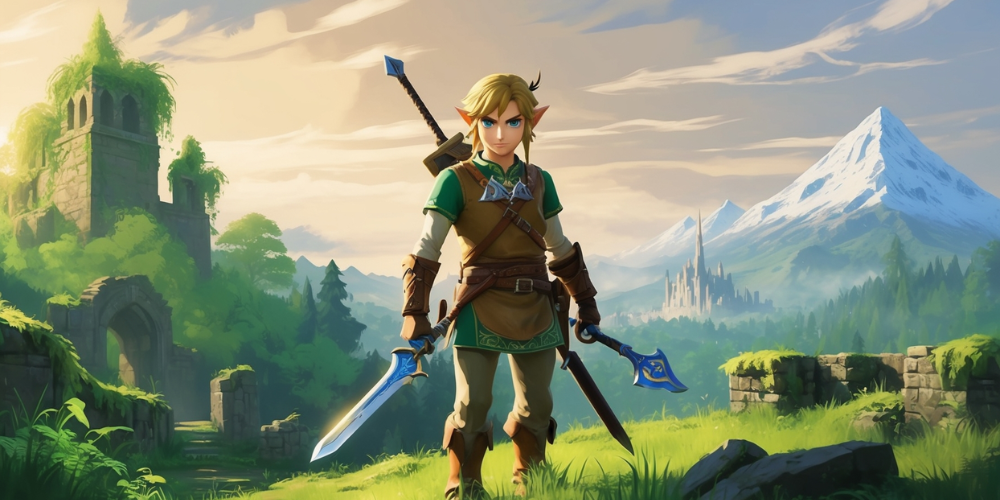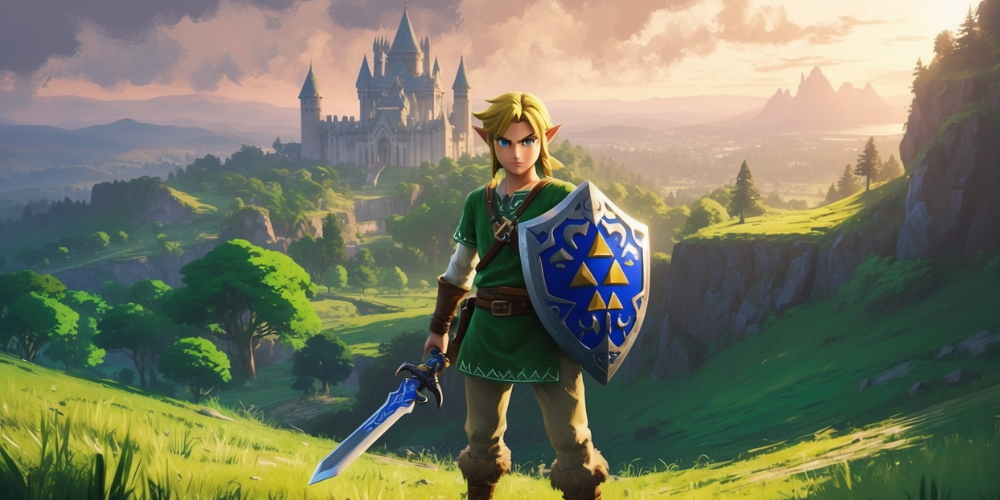Mastering the Art of Speedrunning in The Legend of Zelda: Breath of the Wild
Sep-22-2024

Speedrunning Breath of the Wild has been an exhilarating journey for me. What started as a casual exploration of Hyrule soon transformed into a dedicated challenge, attempting to finish the game as quickly as possible. The combination of intricate mechanics, vast open world, and the satisfying feeling of mastering the game's nuances has kept me hooked from the beginning.
Understanding the Basics
Before diving into speedrunning, I had to grasp the fundamental mechanics of Breath of the Wild. Everything from climbing, cooking, and combat to the unique physics engine plays a crucial role in speedrunning. Understanding how every action impacts my overall time became essential.
Learning the Map
Hyrule is massive, and knowing the map is critical. I spent countless hours studying terrain, shrines, and enemy placements. Detailed exploration helped me identify shortcuts and optimal paths, which I later incorporated into my runs. The ability to quickly navigate the landscape became my secret weapon.

Mastering Movement Techniques
One key aspect of speedrunning is mastering movement techniques. I learned about shield surfing, bomb launching, and paragliding to optimize my travel speed. Each technique saved precious seconds. For instance, bomb launching allowed me to cover large gaps in terrain, while shield surfing helped me descend hills rapidly.
Glitches and Exploits
As I delved deeper into the community, I discovered various glitches and exploits that drastically altered the gameplay experience. From clip-throughs to item duplication, these techniques opened new paths and shortcuts that I never thought possible. However, mastering these glitches required precise timing and understanding how they worked within the game’s engine.
Choosing the Right Route
Choosing the best route is crucial in any speedrun. I experimented with various strategies, adjusting my path based on the objectives I needed to accomplish. Whether it's gathering specific items or defeating bosses, each decision impacts my end time. I learned to adapt and innovate, finding new ways to approach the game’s challenges.

Effective Use of Resources
Managing resources such as health, stamina, and items became a core aspect of my speedrunning strategy. I learned how to cook meals that boost my stamina and health, allowing me to push the limits of my runs. Balancing offensive and defensive strategies played a crucial role in reducing downtime.
Practice Makes Perfect
Speedrunning is not just about speed; it's also about precision. I dedicated countless hours to practice. I recorded my runs to analyze my techniques, identifying areas of improvement. Each session reinforced my muscle memory, allowing for more fluid and instinctive plays during actual runs.
Joining the Community
Engaging with the speedrunning community was one of the best decisions I made. Forums, Discord servers, and social media platforms became avenues for sharing strategies and learning from others. Watching seasoned runners provided insights into advanced techniques I had yet to explore. The communal support enriched my experience.
Understanding the Competition
To truly excel, I began studying the best runners in the game. I analyzed their runs, taking note of their routes and techniques. Understanding how they optimized their gameplay helped me refine my own strategies. This competitive spirit pushed me to improve constantly and strive for personal bests.

Timestamping and Recording Runs
As I progressed, I realized the importance of documenting my speedruns. I started using software to timestamp my runs, which allowed me to track improvements over time. Recording runs also helped me identify mistakes. Review and critique of my gameplay has been vital in honing my skills.
Adjusting for Updates
The Legend of Zelda: Breath of the Wild receives updates, and sometimes these changes can affect speedrunning. I made it a point to stay informed about patches and how they might impact strategies. Adaptability became key, as I needed to adjust my tactics based on the game’s mechanics and any new discoveries made by the community.
Utilizing In-Game Mechanics
Getting comfortable with various in-game mechanics proved essential. Mastering weather effects, enemy behavior, and shrine puzzles helped me speed through portions of the game that often caused delays for new runners. The more I explored, the better I understood how to manipulate the game to my advantage.
Setting Personal Goals
Once I felt confident in my skills, I started setting personal challenges. Whether it was beating my previous time or completing a run without dying, these goals kept me motivated. Each accomplishment fueled my desire to improve further, pushing the boundaries of what I thought was possible.

Streaming My Runs
Streaming my runs added another layer of excitement. Sharing my passion with others while receiving live feedback from viewers made each session more engaging. It also motivated me to improve, as I wanted to showcase my best efforts to my audience. The interaction with fellow fans added a community aspect that kept the practice enjoyable.
Embracing the Learning Process
Throughout my speedrunning adventure, I learned to embrace mistakes. Each failed run provided valuable lessons that contributed to my overall growth. By maintaining a positive mindset and viewing challenges as opportunities for improvement, I continuously enhanced my gameplay.
Finding Joy in Competition
Ultimately, speedrunning has become more than just completing a game quickly; it has transformed into a journey of self-improvement and community engagement. The thrill of competing against others, pushing my limits, and striving for excellence fuels my passion for the game. Each run presents new challenges and triumphs, making it an exhilarating pursuit.







